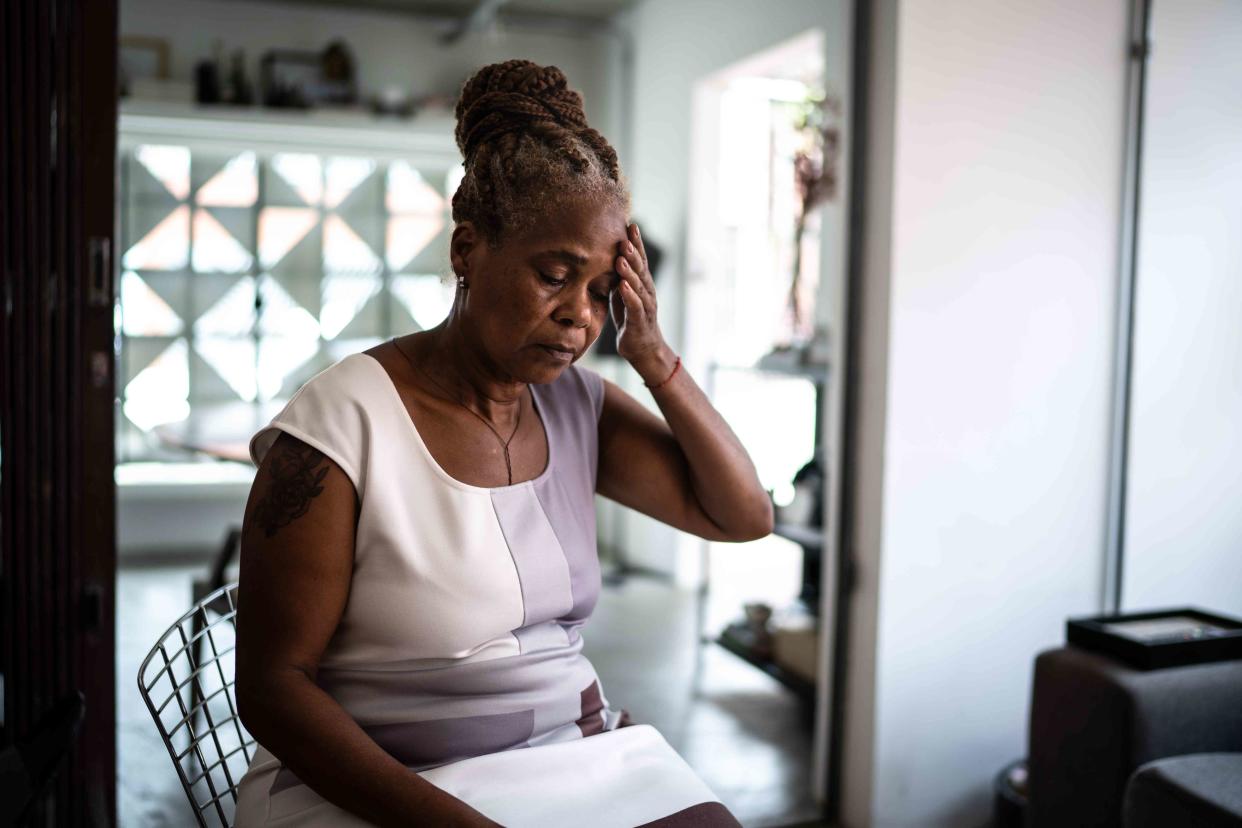Signs and Symptoms of Stroke in Women

FG Trade / Getty Images
Medically reviewed by Smita Patel, DO
Stroke is a life-threatening condition that happens when there is damage to the brain either due to bleeding (hemorrhagic stroke) or blockage of blood flow (ischemic stroke). This condition is a medical emergency that requires timely treatment for the best chance of survival and recovery. And while this condition is common in both males and females, studies suggest that symptoms in people assigned female at birth can often look different.
According to the Centers for Disease Control and Prevention, stroke is the fifth leading cause of death in women. Approximately 1 in 5 women between the ages of 55 and 75 years will have a stroke. For this reason, it's important for women to recognize the symptoms of stroke so they can seek immediate medical attention and get the care they need.
Motor Symptoms
The brain is responsible for controlling your muscle movement—and damage to the brain in a stroke can result in a range of motor (or, movement-related) symptoms. Research is unsure whether assigned males or assigned females are more likely to experience motor symptoms with a stroke. But women may experience the following symptoms:
Weakness on one side of the body
Numbness or tingling sensations throughout your body
Facial drooping on one side of the face
Difficulty with balance
Trouble walking
Leg numbness or weakness
Being more clumsy than normal
Cognitive Symptoms
Another major category of stroke symptoms is related to your cognition, or your ability to think and remember information. Women who experience cognitive symptoms may notice one or more of the following:
Changes in alertness and awareness
Mental confusion or disorientation
Loss of consciousness
Slurred speech
Difficulty understanding speech or following conversations with others
Aphasia, or trouble saying or reading words or naming everyday objects
Apraxia, or not being able to physically follow a common even if you can understand what it is
Writer's note: It's important to know that sometimes it can be difficult to recognize stroke symptoms in yourself, but others may notice you seem different compared to your normal self. If someone shows concern about stroke symptoms, it's best to get attention and not downplay them, since a stroke can be serious.
Visual Symptoms
Some women also experience visual symptoms when they're having a stroke. It can sometimes be easy to confuse these symptoms with vision changes. But, if you experience any of these visual symptoms, it's important to still contact your healthcare provider for guidance:
Diplopia, or seeing double
Partial vision loss
Temporary total vision loss in one or both of your eyes
Other Symptoms
Some studies report that nontraditional or vague (difficult to pinpoint) stroke symptoms may be more common in women. These symptoms may include:
Vertigo or dizziness
Malaise, or a general feeling of being unwell
Fatigue
Nausea or vomiting
Urinary incontinence, or a loss of bladder control
The American Stroke Association notes that women may more often experience symptoms like fatigue, nausea, vomiting, general weakness, and disorientation. Women may also be more likely to downplay these symptoms, which can lead to delays in a stroke diagnosis.
When to Contact a Healthcare Provider
If you or a loved one develop any symptoms of a stroke, call 9111 for transportation to a hospital immediately or visit an emergency room as soon as possible. It's essential to not delay diagnosis and treatment, as every second counts during a stroke. The longer you wait, the worse your outcomes may be.
Strokes are preventable, so it's a good idea to talk with your healthcare provider about ways to lower your risk of stroke. Your healthcare provider may recommend the following tips to reduce your risk of a stroke:
Controlling blood pressure
Managing blood sugar
Increasing physical activity
Eating a heart-healthy diet
Questions to Ask Your Provider
If you or a loved one experiences a stroke, consider asking the following questions to your provider to learn more about the condition:
What are common causes of a stroke—and what may have caused mine?
How long does it take to recover from a stroke?
Which healthcare providers will be a part of my care team?
What treatment options are available for me?
Do you recommend speech therapy?
A Quick Review
A stroke is a serious and life-threatening condition that causes brain damage due to blood vessel blockage or bleeding in the brain. Women may experience symptoms of stroke differently than men. Symptoms can affect your movement, cognition (thinking and memory), and vision. If you or a loved one experiences symptoms of a stroke, it's essential to seek medical care as soon as possible—as this can save your life.
Frequently Asked Questions
Does your body warn you before a stroke?
Strokes can happen without any warning signs. However, in some cases, people can have "mini-strokes" known as transient ischemic attacks (TIAs) before a stroke. These are temporary stroke symptoms that go away without permanent effect. They happen due to temporary blockage of blood flow to the brain. If you experience any symptoms of a stroke or TIA, seek medical attention immediately.
Why are symptoms of stroke sometimes different between men and women?
Scientists are not sure why stroke symptoms may vary between males and females, but there are several theories. Women may experience certain types of stroke more often and develop stroke at an older age—both of which can influence different symptoms.
What symptoms are common after having a stroke?
The symptoms you have after a stroke depend on the part of the brain that experiences damage. You may experience weakness, difficult walking, changes in speaking or understanding speech, dizziness, and memory problems. Fatigue, sleep problems, and depression are also common.
For more Health.com news, make sure to sign up for our newsletter!
Read the original article on Health.com.

